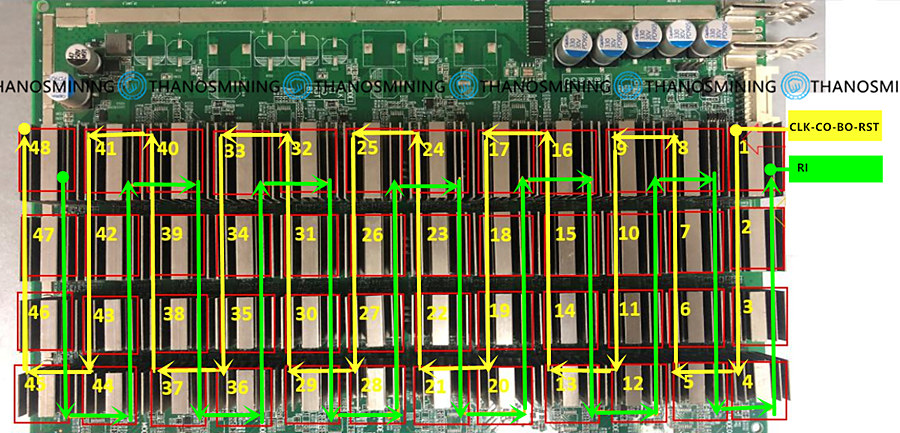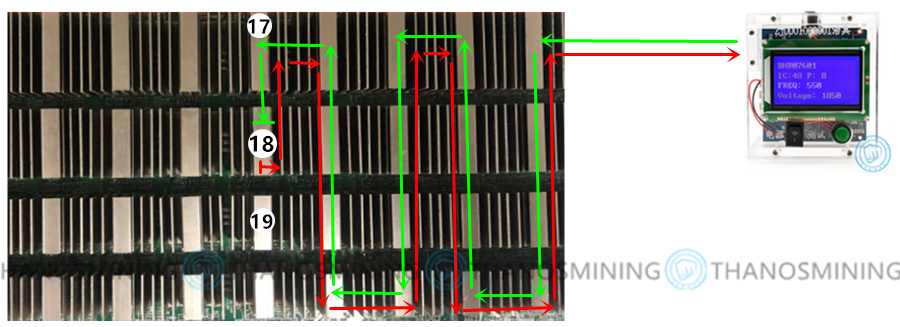An overview of the principle of the Antminer test fixture
By Thanosmining
February 25th, 2022
 This article was written by Thanosmining, please indicate the original author when reprinting. Misappropriation or use for commercial purposes is prohibited without the permission of the company.
Antminer test fixture, no matter what model, scans the entire board by sending a baud rate signal to detect the hash board.
This article was written by Thanosmining, please indicate the original author when reprinting. Misappropriation or use for commercial purposes is prohibited without the permission of the company.
Antminer test fixture, no matter what model, scans the entire board by sending a baud rate signal to detect the hash board.
This article will explain in detail how it works.
————————————————————
First, we need to understand how the hashboard works:
The computing power board is composed of multiple ASIC chips connected in series, which are connected by 5 groups of signals, namely CLK, RST, BO, CO, and RI.
Among them, four groups of "CLK, RST, BO, CO" signals are sent from the first chip to the last chip in sequence, for example: "1-2-3-4-5-6...."
The RI signal is returned by the last ASIC to the first chip, such as "....6-5-4-3-2-1", if one of the ASICs is damaged, the signal will be lost here, and the hash board will appear Anomalies such as: No hash board, 0ASIC, chain missing...
 The principle of the test fixture is to scan the hash board sequentially with an analog signal. When a damaged chip is encountered, the signal stops and the test fixture records the position and provides feedback. By reporting the serial number of the chip at that location to the visual screen port, we can intuitively know which chip is at fault.
The principle of the test fixture is to scan the hash board sequentially with an analog signal. When a damaged chip is encountered, the signal stops and the test fixture records the position and provides feedback. By reporting the serial number of the chip at that location to the visual screen port, we can intuitively know which chip is at fault.
 It is worth mentioning that:
It is worth mentioning that:
Due to the feedback signal, after the test fixture gives the answer, we need to use a multimeter to measure the value of the ASIC (the hash board has 5 test points, please refer to the hash board maintenance guide for the value).
If the chip is not abnormal, test the two adjacent chips (previous and next),
Please replace the chip with abnormal value.

Previous
Innosilicon T1/T2 Hash Board Repair Manual
Read More
Next
Miner Fan Speed Meter User Manual
Read More




